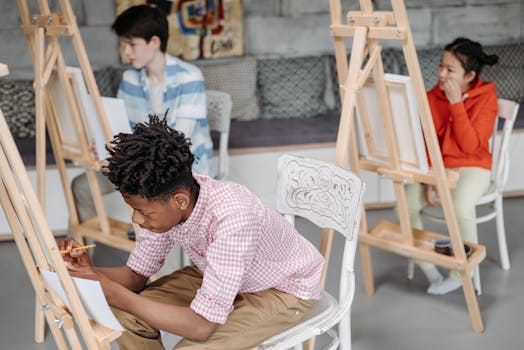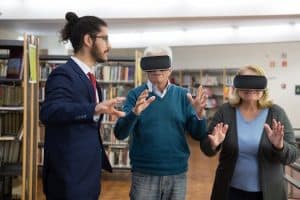Learning Environments: Space Design
When we think about learning, we often focus on the content and delivery methods. But what about the physical space where learning takes place? Learning environments play a crucial role in shaping academic and personal growth. From primary schools to corporate training centers, space design has a significant impact on the learning experience. In this article, we will explore the importance of learning environments and how effective space design can promote learning and development.
H2: Why Are Learning Environments Important?
Learning environments encompass all physical and virtual spaces where teaching and learning take place. These include classrooms, libraries, laboratories, outdoor spaces, and online platforms. Whether traditional, online, or blended, learning environments are critical in creating a conducive atmosphere for students or participants to acquire knowledge and skills.
Studies have shown that a well-designed learning environment can positively impact student engagement, motivation, and performance. It also allows for different learning styles and personalized approaches to education. A cluttered and uninspiring learning environment, on the other hand, can lead to distractions, discomfort, and disengagement.
H3: Space Design for Learning Environments
Space design refers to the planning, organization, and arrangement of physical and virtual spaces to optimize learning outcomes. It involves incorporating elements such as lighting, furniture, color, and technology to create an environment that meets the needs of learners.
Lighting
Proper lighting is crucial in a learning environment, as it affects visual comfort and alertness. Natural light is the best source of lighting, as it helps improve concentration and mood. However, in situations where there is inadequate natural light, artificial lighting should be used effectively. Choosing warm lighting for relaxation and cool lighting for stimulating activities can enhance the learning experience.
Furniture
The furniture in a learning environment should be selected based on its functionality, durability, and aesthetic appeal. It should also be adjustable and adaptable to cater to different learning styles and needs. Ergonomic chairs and desks are recommended to promote comfort and reduce physical strain.
Color
Color has a significant impact on emotions and behavior. It can evoke different responses and influence learning and mood. For instance, warm colors such as red, yellow, and orange can stimulate creativity and enthusiasm, while cool colors like blue and green can enhance calmness and concentration. Therefore, choosing the right color scheme for a learning environment is crucial.
Technology
In today’s digital age, technology plays a vital role in learning environments. It provides access to vast resources and promotes interactive and collaborative learning. The inclusion of technology in space design allows for flexibility in instruction delivery and promotes engagement and creativity.
H2: Key Elements of Effective Space Design
Now that we understand the importance of space design, let’s look at some key elements that make a learning environment effective.
Flexibility and Adaptability
An effective learning environment should be flexible and adaptable to cater to the changing needs of learners. It should allow for different teaching and learning styles and accommodate the use of various instructional tools and technologies.
Comfort and Safety
A comfortable and safe learning environment is essential for optimal learning. It should promote physical well-being by providing appropriate seating, ventilation, and temperature control. It should also be designed to ensure the safety of everyone in the space.
Inclusivity and Accessibility
An inclusive and accessible learning environment caters to the needs of all learners. This includes students with disabilities or special needs, ensuring they have equal access to education. Inclusivity and accessibility also extend to virtual learning environments, where measures should be put in place to ensure equitable access for all.
H3: Conclusion
In conclusion, learning environments play a critical role in shaping the learning experience. Effective space design can enhance student engagement, motivation, and performance, while a poorly-designed one can hinder learning and development. Incorporating elements such as lighting, furniture, color, and technology can create an environment that meets the needs of learners and promotes their overall growth.
As we strive to improve education, it is essential to give equal attention to learning environments as we do to curriculum and teaching methods. By investing in effective space design, we can create meaningful and engaging learning experiences that will benefit learners for years to come.









